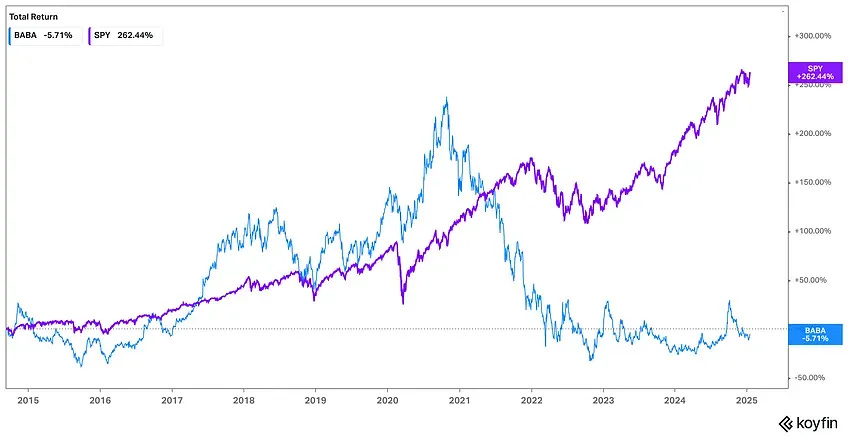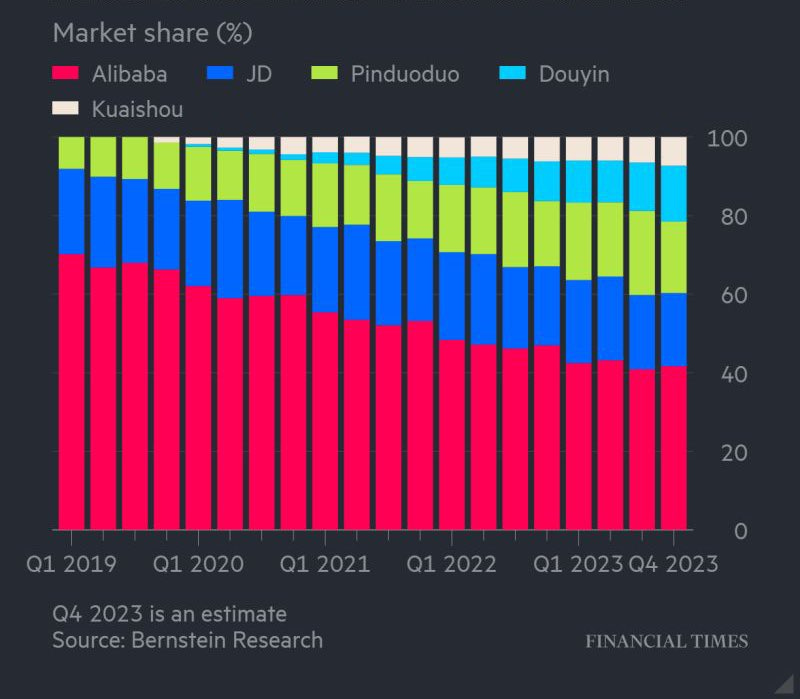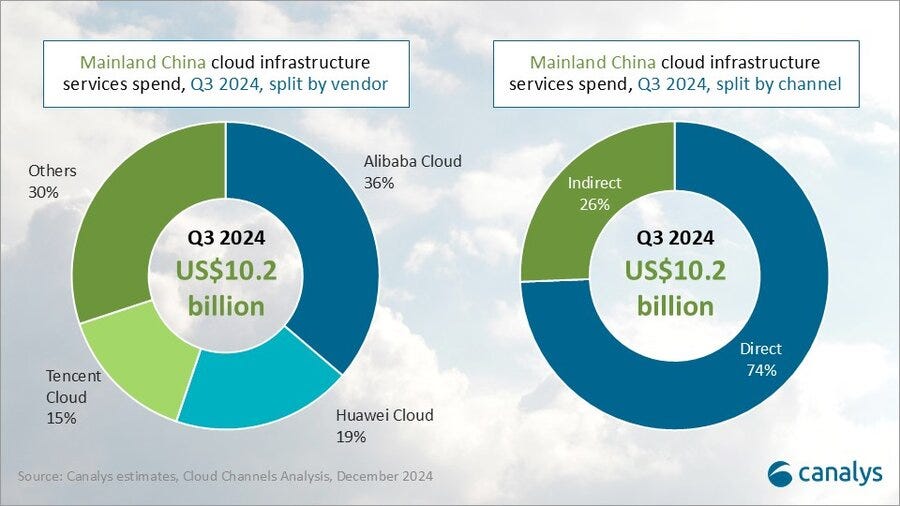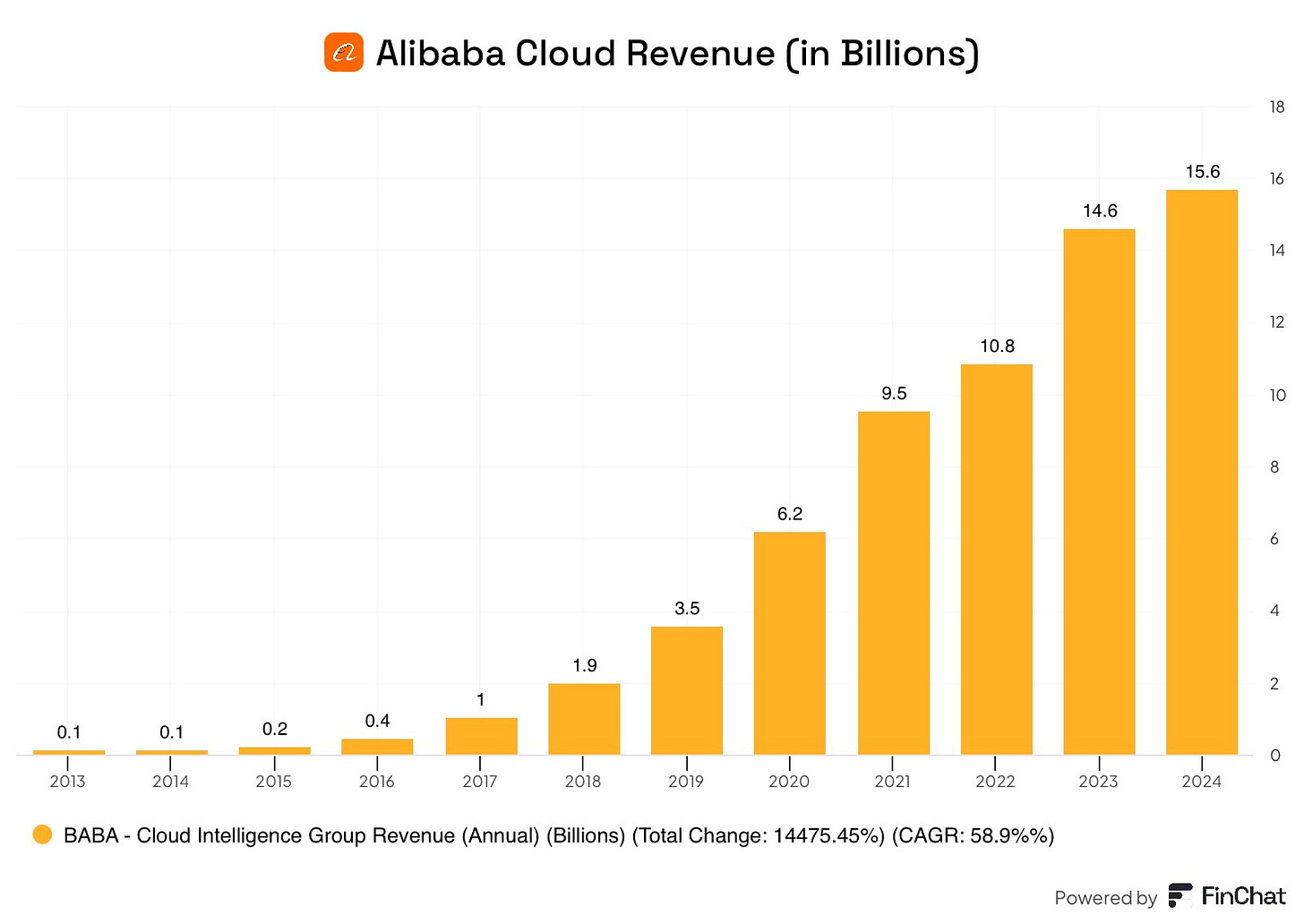In the interest of full disclosure, BABA 0.00%↑ currently represents around ~18% of my investment portfolio. This concentration naturally exposes me to potential cognitive biases, such as confirmation bias, wishful thinking, and perhaps even overconfidence. I actively try to mitigate these biases and maintain an objective perspective on my investment thesis.
Level up your investment research with Koyfin's powerful market analytics platform. I've been using their comprehensive dashboards, real-time data, and intuitive charting tools to make more informed financial decisions. Try Koyfin today using my referral link and get 20% OFF any paid plan.
A Generational Opportunity for Long-Term Investors
Alibaba Group Holding Limited (NYSE: BABA, HKEX: 9988) is a global titan in e-commerce, cloud computing, and logistics. Yet, despite its dominance and strong fundamentals, the stock is trading at a valuation that suggests stagnation or decline. For value-oriented investors, this disconnect between perception and reality presents a rare opportunity to invest in a high-quality business at an extraordinary discount.
1. Business Overview
China Commerce:
Alibaba’s market position is unparalleled, solidifying its dominance in China’s e-commerce ecosystem and positioning it as a global powerhouse. Its flagship platforms, Taobao and Tmall, together account for approximately ~40% of China’s online retail market—a staggering figure given the country’s massive and rapidly growing digital economy. These platforms cater to distinct segments of consumers: Taobao thrives as a consumer-to-consumer (C2C) marketplace, while Tmall focuses on business-to-consumer (B2C) transactions, attracting premium brands and offering a trusted shopping environment.
This dominance translates into substantial financial performance, with annual revenues from these platforms exceeding ~$60 billion. Such impressive revenue is driven by robust consumer demand, a comprehensive ecosystem of sellers and buyers, and Alibaba’s unparalleled technological and logistical infrastructure. The company’s operating margins, which consistently exceed ~30%, highlight its efficiency in monetizing its vast user base, optimizing its supply chains, and leveraging data analytics to drive sales and enhance customer experience.
“We expect the company’s adjusted earnings to bottom in FY3/25, and grow by 9% in FY3/26, with EBITA margins for Taobao and Tmall stabilising at c.42%.” — DBS
Furthermore, Alibaba benefits from its ecosystem approach, integrating e-commerce with services like digital payments through Alipay, cloud computing via Alibaba Cloud, and logistics through Cainiao Network. These complementary services create a self-reinforcing cycle, increasing user retention and boosting overall revenue. Combined with its ability to tap into trends such as livestream shopping and AI-driven personalization, Alibaba maintains a competitive edge that is difficult for rivals to replicate. This dominant position not only underscores its influence in China but also its ability to shape global e-commerce trends.
International Commerce (AIDC):
The company’s growth prospects are bolstered by its strategic expansion into international markets via platforms such as Lazada and AliExpress, which are subsidiaries of Alibaba Group and are key players in global e-commerce. Lazada primarily serves Southeast Asia, a region experiencing rapid digital transformation and rising disposable incomes. With over 400 million internet users in Southeast Asia and increasing smartphone penetration, the potential for e-commerce growth is substantial.
On the other hand, AliExpress targets a broader international audience, particularly in Europe, Latin America, and parts of the Middle East. Its appeal lies in offering a wide range of affordable products, often directly sourced from manufacturers, to price-conscious consumers.
This international expansion enables the company to diversify its revenue streams and reduce dependence on domestic markets. It also allows access to markets with high growth potential, especially in emerging economies where e-commerce penetration is still developing. Additionally, leveraging Lazada’s localized knowledge and AliExpress’s global logistics infrastructure can improve the efficiency of scaling operations, meeting regional demand, and enhancing customer experiences.
Such a move is not only a growth driver but also a competitive advantage, positioning the company as a global player in e-commerce while capitalizing on the increasing adoption of online shopping worldwide.
Alibaba Cloud:
In addition to its dominance in e-commerce, Alibaba has strategically positioned itself as a leader in the rapidly growing cloud computing sector. Alibaba Cloud, also known as Aliyun, stands as the largest cloud provider in China, boasting a commanding market share in the region.
Globally, it ranks as the fourth-largest cloud computing company, competing alongside industry giants such as Amazon Web Services (AWS), Microsoft Azure, and Google Cloud. With annual revenue of approximately ~$15 billion and robust double-digit compound annual growth rates, Alibaba Cloud has become a key driver of Alibaba’s overall growth and diversification
“We expect cloud revenue to generate a solid 11% CAGR from FY3/24 to FY3/27F, supported by increasing demand from public cloud and AI-related products.” — DBS
The platform provides a wide array of services, including infrastructure-as-a-service (IaaS), platform-as-a-service (PaaS), and artificial intelligence solutions, catering to businesses of all sizes across industries. Its success has been fueled by the rapid digitalization of Chinese enterprises, government cloud adoption initiatives, and its ability to innovate and meet the unique needs of the Chinese market.
Logistics (Cainiao)
Logistics plays a critical role in Alibaba’s ecosystem, with Cainiao serving as its dedicated logistics arm. Cainiao has been a key enabler of Alibaba’s success, achieving strong growth by efficiently managing the movement of goods within China and across international markets. Its massive logistics network incorporates advanced technologies such as artificial intelligence, big data analytics, and IoT-powered supply chain management.
By seamlessly integrating with Alibaba’s e-commerce platforms, Cainiao optimizes inventory management, reduces delivery times, and ensures a smooth customer experience. This integration allows for innovations like same-day or next-day delivery in major markets, enhancing Alibaba’s appeal to both consumers and merchants.
Moreover, Cainiao’s strategic partnerships with logistics providers worldwide and its focus on building smart warehouses and automated delivery systems amplify its competitive edge. This sophisticated logistics ecosystem creates significant barriers for rivals, as replicating the scale, technology, and efficiency of Cainiao would require extensive resources and years of development. Consequently, Cainiao not only supports Alibaba’s e-commerce dominance but also positions the company as a global leader in logistics innovation.
Alipay:
Alipay, operated by Ant Group, is one of the largest digital payment platforms in the world, commanding a significant share of the Chinese mobile payment market. With over 1 billion users globally, Alipay dominates alongside its primary competitor, Tencent’s WeChat Pay. In China, Alipay holds approximately ~50% of the mobile payment market, making it the leading platform in a rapidly growing cashless economy.
Alipay’s success is attributed to its integration within Alibaba’s ecosystem and its comprehensive suite of services, including digital payments, wealth management, and financial tools. Its focus on innovation, security, and accessibility has enabled Alipay to expand internationally, partnering with global merchants and payment providers to support cross-border transactions and serve Chinese travelers abroad.
Keep reading with a 7-day free trial
Subscribe to Coughlin Capital to keep reading this post and get 7 days of free access to the full post archives.










